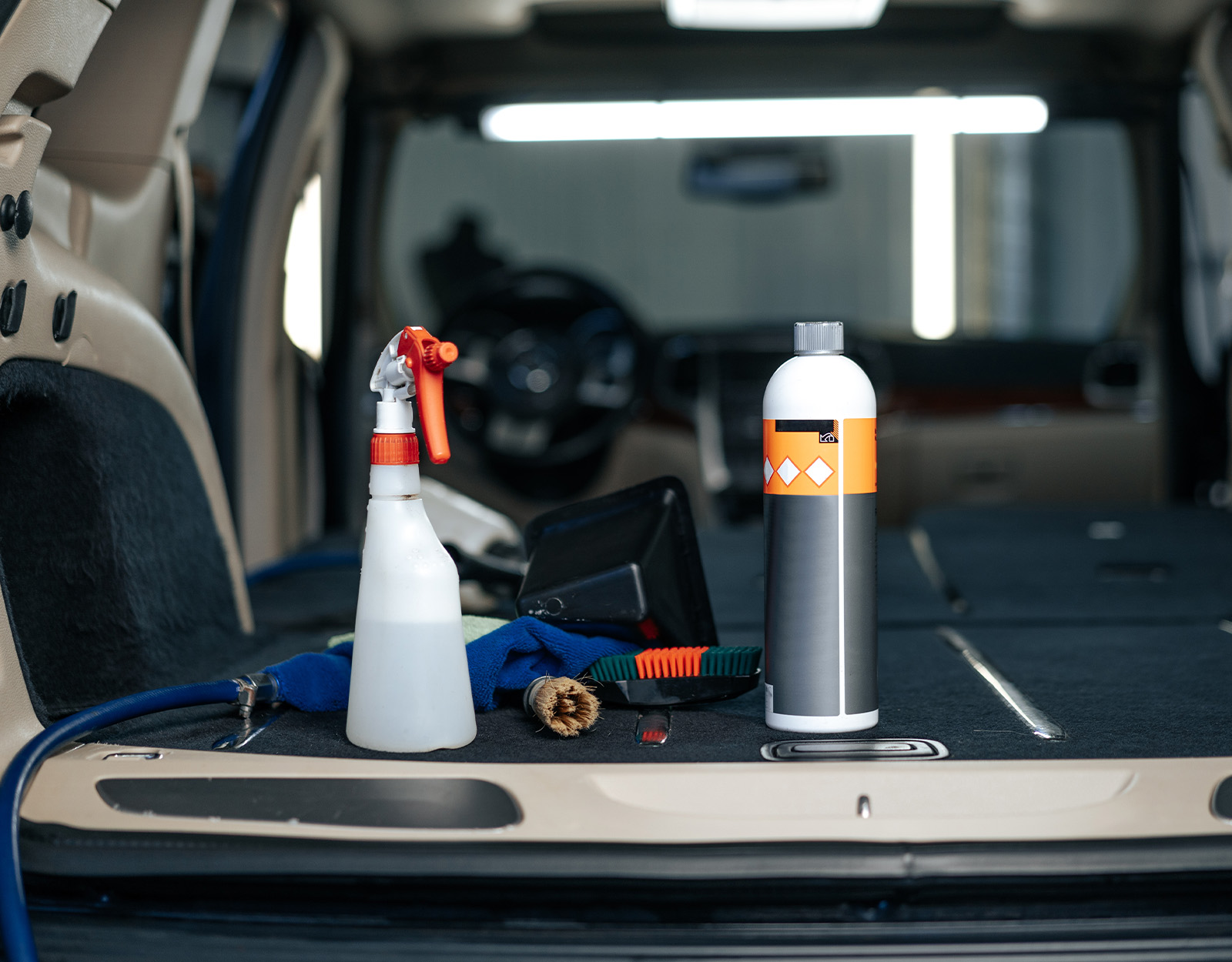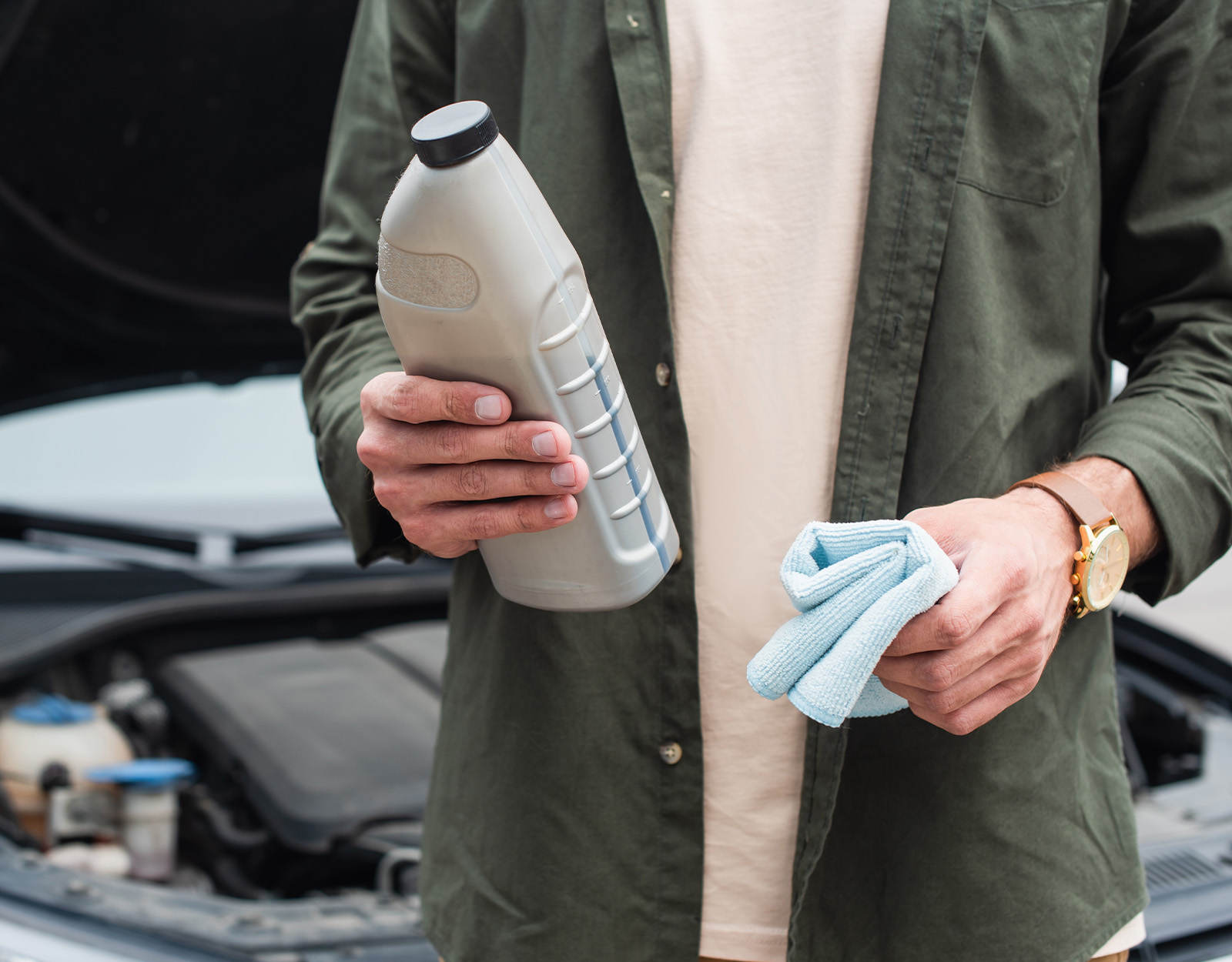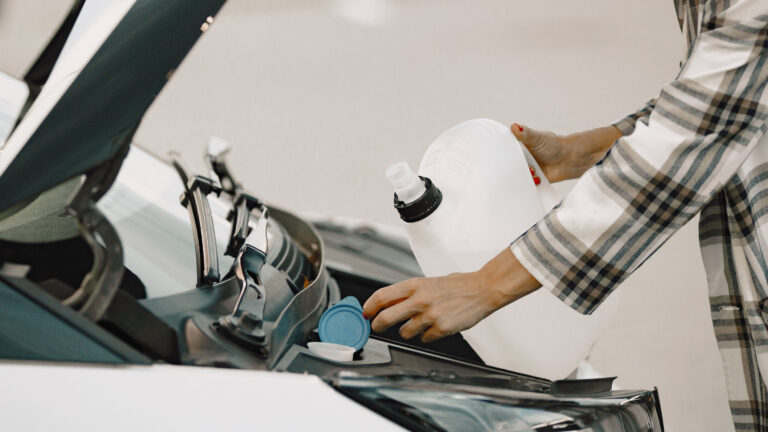Modern Homemakers
Car Care 101: Essentials That Parents Should Always Keep in Their Car
That’s why every car has a trunk—to store all your essentials in it!
There’s a truth in the saying “When you take care of the car, it will take care of you.” And for those who live in Metro Manila or the far-flung provinces, it’s more practical to own a car to take us and our families around.
But like all machines, cars need to be kept in tip-top shape. To make sure we survive the bumpy roads and hot weather, we list car essentials in the trunk to care for our faithful modern-day steed.

1. Coolant
Overheating is one of the leading causes for engine overhauls. And while cars are designed with a cooling system, not all designs can handle Philippine heat—even more so during heavy traffic. A car’s cooling system works best on open roads when there’s air passing through. But if the car isn’t moving, the tubes are filled with coolant to make sure our engines don’t melt!
There are two kinds of coolant: concentrate and ready-to-use. Ready-to-use is good for those who are constantly on the go, while concentrate is for those who have time to mix it. Mixing the concentrate can either go 2 parts water and 1 part coolant (2:1) or 1 part coolant to 1 part water (1:1).
Some drivers have advocated for just putting cold water, but coolant has a lower boiling point—allowing your car to last longer in traffic and hot weather. But make sure you only put the coolant or cold water in when the engine is COLD. Doing otherwise will crack your engine in half because of temperature shock!
In the Philippines, coolant refills are a weekly thing—depending on the traffic and its frequency.
2. Brake Fluid
If the person driving the car is a beginner, then brake fluid is essential to have. Novices or young drivers—because they’re not confident—tend to “ride” the brake. They may think they’re just “hovering” over the pedal, but they’re actually applying pressure to it. This pumps the fluid into the brakes to stop the car, which ends up wearing out the brake pads and using up the fluid.
Being stuck in traffic is another reason why our brake fluid runs out. If traffic has us going at a snail’s pace, we’ll be resting our foot every so often on the brake. That’s why some people insist on using the handbrake during traffic instead because doing so doesn’t rely on fluid.
With no brake fluid, the car will not stop properly and it will take a lot of skill and calm to rely on pure friction to stop a moving car. That’s not something any driver (unless race-trained) is ready to do on the fly!
3. Funnel
Whether you’re adding coolant or brake fluid to your car, spilling some fluids onto the car’s engine workings isn’t too detrimental. But a funnel helps keep things clean. It’s also hany, given that some of the car’s containers have small mouths.
Plus, getting oils, coolants, brake fluid, power steering fluid, and engine additives all over the car’s engine is not fun to clean up. A chamois towel can only soak up so much fluid after all!
4. Engine Oil and Transmission Fluid
These two come hand-in-hand and are changed every 10,000 km. However, if you live in a mountainous area, consider refilling the engine oil and transmission fluid every 7,000 km because climbing is more taxing on the car’s transmission and engine. Engine oil and transmission fluid are likewise responsible for making sure the gears smoothly work together to make the car move.
One way to tell is to pull out what they call the engine’s dipstick and check the three dots at the end. If the dot closest to the dipstick’s tip is the only one wet then, that means it’s low. Another way to tell is to rub the oil or fluid in between the fingers. If it’s black and crumbling into dust, it’s time for a change.
There are two kinds of oils for engine oil: semi-synthetic and synthetic. While many say synthetic makes the car “behave” better, semi-synthetic is more affordable. They also come with numbers like 10W-40 or 15W-40. The number next to the “w” stands for the oil’s viscosity in low temperatures, which is important when starting up a car.
When loading up the transmission fluid, it matters if it’s for an automatic or manual transmission. Manual transmission fluid is known to be thicker and heavier, which can grind an automatic transmission into pieces.
Now, if this oil and fluid are not refilled every 10,000 km, we may find our cars stuck or struggling to climb a 45-degree incline. Even if the car is on “L” or Low or 1st gear. Stay aware by either writing down the reading on the odometer and then adding 10,000 km to the number to predict when it’s due for a refill. Some write it down on masking tape and stick it to the shade. Others take note of it on their phones.
5. Tire Wrench
We never know when our tires may blow or lose their treads, especially during a mountainous trip. The rocky roads—coupled with the hot environment, the friction, and even the driving style—can quickly wear out our tires.
Some tires can’t even handle the Philippine heat, which can cause them to crack after running for so long. Others may encounter freak accidents when they find a nail impaled all the way into the tire’s inner tubing.
That’s what the tire wrench is for. Tire wrenches can come in several sizes and pieces. But some drivers prefer to use a tire wrench that’s shaped like a cross to give them more torque to loosen or tighten the nut. In some cases, the tire wrench is also a handy weapon if we get held up.
6. Jumper Cables
Cars have two sources of power: the fuel tank and battery. The battery is responsible for powering many of the car’s electrical components, like the headlights, the signal lights, and the handy dandy horn. A car charges its battery via rotations through the alternator belt while running, which generates electricity. And yes, it does charbe while the car is stopped, but not as much as when it moves.
Although car shops have been selling electronics with low loads (meaning they don’t need much power), there are days when in our hurry—we leave the lights on. If the car has a malfunctioning car alarm, that can also drain the battery. If the car doesn’t start and the gas is still full, that means the battery is low or dead because of constantly being stuck in traffic.
Jumper cables are essential because it’s an emergency fix that lets you jumstart a stalled car through another electrical source. Make sure you know your positive and negative so it jolts the battery right. Also, don’t be afraid to ask a fellow driver for help if your battery needs jolting. They’re usually empathize and quick to lend a helping hand.
7. Sunshade
If we didn’t live in a sunny country then, the sunshade wouldn’t be a car essential. However, this is the Philippines where temperatures can reach 30 and above, which can destroy the car’s interiors. That includes the dashboard and the leather seats—which are not cheap to fix or upholster. Even more so if we’ve swapped out the seats for bucket seats!
Simply put, sunshades are there to protect the car’s interior.
8. Tire Jack
A tire jack is different from a tire wrench in the sense that it helps “lift” the car for a tire change. Usually, cars have one stashed in the trunk. But some cars are heavier than the typical weight capacity of a jack, like Chevrolet’s Trailblazer and Suburban, to name a few. If you own this type of vehicle, you can bring extra supports to use alongside your car’s original tire jack.
9. OR and CR
The LTO recommends you to keep the car’s original car registration (CR) and photocopy of the official registration (OR) are in the car. Usually, they provide that during registration which qualifies the car for insurance, specially when you get into an accident.
Having the OR and CR in the car’s glove compartment or trunk helps prove ownership of the car so that the expenses of repairing the car after an accident can be covered by the insurance.

Cars: The modern-day steed for staycations and out-of-town trips
Especially with the long week coming from Holy Week 2024, cars will definitely need a tune-up. But one can never be too prepared when going out. Car problems usually just crop out of nowhere, so keeping the essentials will at least “remedy” the problem.
That way, the car will be stable enough to wheel itself to the nearest gas station or car repair shop to fully solve the issue.
More about cars?
8 Vintage Cars That Every Dad Dreams Of Owning
LIST: Best Family Cars in the Philippines 2023
Family-Friendly Tips When Buying A Second-Hand Car





